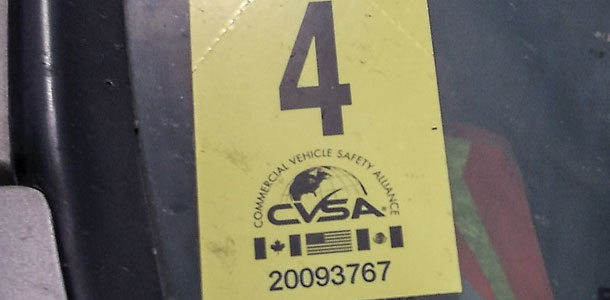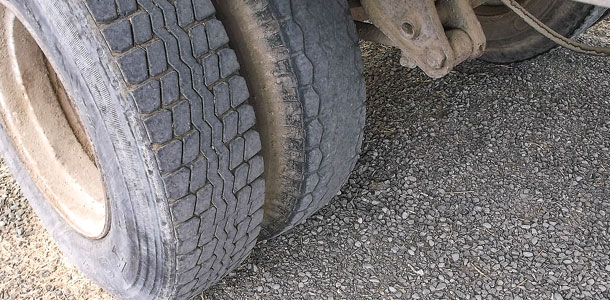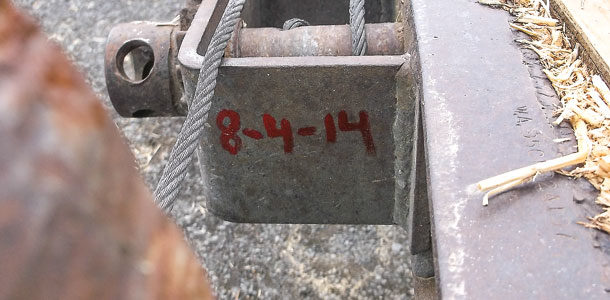There is enough variation in forage growing and dairy or beef operations to make the “one-size-fits-all” plan for farm trucks end up not fitting a lot of farms, ranches or dairies, either.
Some farms are the “all in one place” variety, so that the harvest vehicles never go on public roads. Other operations are scattered over several counties, and the harvest vehicles accrue more miles on highways than in fields.
Another mix that alters the need for trucks is the grower who prefers to deliver his product rather than having the buyer arrange the trucking.
Vehicle safety is not relative to which type of operation you have. The basics of safety for any truck (or passenger vehicle) are as follows:
- The operator must be able to stop it and steer it.
- It must be able to be seen, and the driver must be able to see in daylight and in the dark.
- It must not pose a hazard to other traffic.
All the rules and guidelines pertaining to truck safety have their source in the above simple statements.
Truck brakes
The equipment safety rules for truck brakes are written in an attempt to define and measure the ability of a vehicle to stop in a safe manner within a rule-mandated distance.
When your truck is chosen for a safety inspection, the brakes will be the first item checked. If there is a problem, you may receive a correction notice and will be asked to document the correction, usually within 15 days, and mail it in.
For a more serious problem, you may be “red tagged,” and your truck will not be allowed to leave until the repair is made.
Road inspections
The most desirable option is to avoid being inspected on the road in the first place. There is a way to “almost” make this happen. If your trucks are regularly passing through truck weigh stations or ports of entry, they are subject to either random safety inspections or inspections because of a visual defect.
If your truck is inspected and no problems are found, make sure that you ask to have a Commercial Vehicle Safety Alliance (CVSA) inspection sticker placed on your truck. This will allow your truck to avoid most random inspections for several months.
Some areas are using transponders in the truck to identify the truck to the weigh station as it approaches from the highway.
These areas have pre-clearance scales imbedded in the roadway, so the truck’s weight and identity can be checked without it having to leave the highway.
Be aware that each carrier that owns trucks will have a Commercial Safety Alliance (CSA) safety score. Each time a truck is inspected and a defect is found, or when a moving violation occurs, the safety score worsens.
A poor safety score will cause your trucks to be pulled in for inspection on a regular basis. In most areas truck inspectors will gladly inspect your trucks by appointment.

This will allow you to have every truck you will be running through harvest with a current CVSA sticker. This will eliminate most “surprises” at the scale.
Can my truck be safe but not compliant?
If you have an incident involving one of your trucks on your farm that results in an injury to an employee or a visitor, and a mechanical defect with the truck contributed to that injury, then the truck was not “safe.” If the event took place on private property rather than on a public road, then you will be dealing with OSHA.
They may or may not choose to call in the DOT guys for their expertise.

With that said, there are some parts of a truck that can be “out of compliance” as far as the highway truck safety people are concerned that are perfectly safe for off-road use. Consider the concept of a “run-out” truck tire.
This is a tire that does not have enough tread remaining to be left on a unit that is regularly on the highway. It also has issues so that it is not a candidate for re-capping. It is, however, still capable of holding air and carrying a load.
This tire may do very well on a trailer or truck that never leaves the farm. In this usage, the run-out tire may well last five or 10 years.
This same piece of equipment which never leaves the farm must still be able to stop, to steer, to be seen and to allow the driver to see, as well as not being a danger to other equipment and personnel.
The lining on brake shoes on heavy trucks is legal down to a quarter-inch of thickness. Less than this and the truck is “out of compliance” and will be written up.
If this truck is used three weeks a year to haul corn silage from the field to the bunker and is never on the public roads, it could take 10 years for the brake-shoe lining to wear from the quarter-inch down to an eighth of an inch.
If the rest of the brake components are working properly, then this truck could very well be safe but not in compliance.
Harvest-truck fleets
Most harvest-truck fleets are a mixed lot of retired over-the-road trucks. These old-timers finally get to the point that keeping them in compliance with the myriad of seemingly nonsensical rules becomes a financial burden.
Most of them were, on the day they were pulled from service, in compliance with the rules of safety. Note that being old does not by itself make a truck unsafe. Lack of maintenance generally equals unsafe.
Segregation may be a good thing if your operation uses some trucks mainly for highway use and others mainly for off-road, on-farm-only use.
While safety can never be compromised, it is prudent to keep some trucks that are perfectly safe away from highway weigh stations at all costs.
Who cares what the truck looks like?
Consider this scenario: Two trucks hauling agricultural products pull into a weigh station at the same time. One is clean and shiny, with all the lights working, and the tires appearing to be a matched set. The front bumper is straight and undamaged.
The other truck needs a bath and is years overdue for a paint job. The front bumper is bent, and the fiberglass hood is showing some unrepaired cracks that appear to be from a previous collision.
If you were manning the weigh station, with the charge to keep the roads safe and were asked to prove you are doing that by writing some tickets, which of the two trucks would you choose to inspect?
Take some pride in a vehicle you write your farm name on and send out in public. Keeping the trucks that look like ticket bait off the public roads will win you public-relations points with your neighbors. It can also save you a hassle with the guys with the rulebook, badge, gun and ticket book. FG
PHOTO
PHOTO 1: One method for keeping track of trailer inspections is to paint the date of the last inspection somewhere visible, as a reminder.
PHOTO 2: Current CVSA inspection stickers can exempt a vehicle from random inspections for several months unless there is a clear, visible defect.
PHOTO 3: These qualify as “run out tires.” They are not legal for on-highway use but will last a long time on an off-road trailer that sees occasional use. Photos provided by Brad Nelson.











